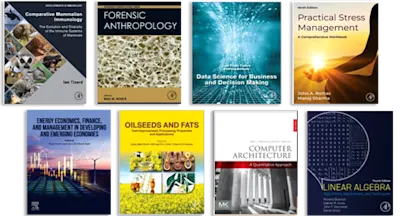
An Introduction to NURBS
With Historical Perspective
- 1st Edition - July 21, 2000
- Imprint: Morgan Kaufmann
- Author: David F. Rogers
- Language: English
- Paperback ISBN:9 7 8 - 0 - 1 2 - 3 9 9 1 8 3 - 6
- Hardback ISBN:9 7 8 - 1 - 5 5 8 6 0 - 6 6 9 - 2
- eBook ISBN:9 7 8 - 0 - 0 8 - 0 5 0 9 2 0 - 4
The latest from a computer graphics pioneer, An Introduction to NURBS is the ideal resource for anyone seeking a theoretical and practical understanding of these very important… Read more
Purchase options

The latest from a computer graphics pioneer, An Introduction to NURBS is the ideal resource for anyone seeking a theoretical and practical understanding of these very important curves and surfaces. Beginning with Bézier curves, the book develops a lucid explanation of NURBS curves, then does the same for surfaces, consistently stressing important shape design properties and the capabilities of each curve and surface type. Throughout, it relies heavily on illustrations and fully worked examples that will help you grasp key NURBS concepts and deftly apply them in your work. Supplementing the lucid, point-by-point instructions are illuminating accounts of the history of NURBS, written by some of its most prominent figures.
Whether you write your own code or simply want deeper insight into how your computer graphics application works, An Introduction to NURBS will enhance and extend your knowledge to a degree unmatched by any other resource.
- Presents vital information with applications in many different areas: CAD, scientific visualization, animation, computer games, and more.
- Facilitates accessiblity to anyone with a knowledge of first-year undergraduate mathematics.
- Details specific NURBS-based techniques, including making cusps with B-spline curves and conic sections with rational B-spline curves.
- Presents all important algorithms in easy-to-read pseudocode-useful for both implementing them and understanding how they work.
- Includes complete references to additional NURBS resources.
- Edition: 1
- Published: July 21, 2000
- Imprint: Morgan Kaufmann
- Language: English
DR
David F. Rogers
David F. Rogers, Ph.D., is the author of two computer graphics classics, Mathematical Elements for Computer Graphics and Procedural Elements for Computer Graphics, as well as works on fluid dynamics. His early research on the use of B-splines and NURBS for dynamic manipulation of ship hull surfaces led to significant commercial and scientific advances in a number of fields. Founder and former director of the Computer Aided Design/Interactive Graphics Group at the U.S. Naval Academy, Dr. Rogers was an original member of the USNA's Aerospace Engineering Department. He sits on the editorial boards of The Visual Computer and Computer Aided Design and serves on committees for SIGGRAPH, Computer Graphics International, and other conferences.